#CancerWarriorsUnite
Text
Reducing the risk of gastric cancer is within your reach! 🍎🥦 Follow a healthy diet, 🚭 quit smoking, and embrace a lifestyle that prioritizes your well-being. Let's #PreventGastricCancer together! 💪❤️
For more details click on the link 👇🏻
https://bit.ly/3osreVo
#HopeAgainstCancer#ICANWIN#YESITSRAM#FightAgainstCancer#CancerAwarenessMatters#TogetherAgainstCancer#CancerWarriorsUnite#EmpoweredByHope#RaisingCancerAwareness#IgniteTheFight#ConquerCancerTogether#InspireHopeForSurvivors#CancerFreeFuture#CancerAwareness#CancerSupport#CancerSurvivor#CancerFighter#CancerCommunity#CancerResearch#CancerPrevention#CancerFree#EndCancer#StandUpToCancer#CancerJourney#CancerWarrior#CancerAware#CancerThrive#NoOneFightsAlone
26 notes
·
View notes
Text
A little back story.
On Friday 16th December 2022 the end of term for my kids, we got home warmed up and had dinner, a movie with snacks hot chocolate and baths just a normal Friday night.
once the kids were in bed I got in the bath and while washing I found a small lump in the top side of my left breast.
At first I went into panic, sobbed while in the bath.
But mum mode kicked in and I got out and carried on as normal.
I did this for the next week it wasn't till Christmas day that I actually told someone and instantly felt the world lifted off my shoulders.
I was urged to go to the GP which I did on the 3rd of January when the kids went back to school.
❤️
On the 3rd January I called the doctors surgery, now normally my GP surgery receptionist is quite abrupt and can come across rude today was different.
I got through at 8.30 dead on, red suit how can I help
I immediately started to swell up in tears, receptionist are u ok
I said yes but I can't believe I'm calling for this reason
She said it's ok she's heard most things and no need to be embarrassed
I said I'm not embarrassed this is really hard I'm 33 and found a lump in my left breast
She said come in at 11.30 doc will see you,
🥺
I said can I bring someone with me
She said of course.
I couldn't believe it, I had to say it out loud to a complete stranger
It seemed real now although at this stage it could have been absolutely anything.
I went to the GP appointment.
She examined me and straight away said I'm referring you for the ONE STOP CLINIC. (I will do posts about each service etc for people to know what each is etc )
I waited 2 weeks and heard nothing.
So I chased it up and was given an appointment a week later.
No word of a lie that wait is the longest, loneliest, most horrible wait ever.
The whole 3 weeks I cried myself to sleep every night.
Knowing it could be breast cancer was the most devastating thing I'd ever been through.
0 notes
Text
Cervical Cancer: Understanding the Disease, Prevention, and Treatment

Introduction:
Cervical cancer is a significant health concern affecting women worldwide. It is a type of cancer that develops in the cervix, the lower part of the uterus. In this blog, we will explore the key aspects of cervical cancer, including its causes, risk factors, prevention strategies, early detection methods, and treatment options.
Causes and Risk Factors:
The primary cause of cervical cancer is persistent infection with high-risk types of human papillomavirus (HPV), a sexually transmitted infection. Other risk factors include smoking, a weakened immune system, long-term use of oral contraceptives, multiple sexual partners, and a history of sexually transmitted infections. Understanding these risk factors can help individuals make informed choices to reduce their chances of developing cervical cancer.
Prevention Strategies:
Prevention is key when it comes to cervical cancer. Vaccination against HPV is a crucial preventive measure and is recommended for both males and females before they become sexually active. Regular cervical cancer screenings, such as Pap tests and HPV tests, are vital for early detection and intervention. Practising safe sex, maintaining good sexual health, and quitting smoking are additional preventive strategies that can significantly reduce the risk of developing cervical cancer.
Early Detection and Screening:
Regular cervical cancer screenings are essential for early detection and treatment. Pap tests, also known as Pap smears, involve collecting cells from the cervix and examining them for abnormal changes. HPV tests detect the presence of high-risk HPV strains in cervical cells. These screenings can identify precancerous changes or early-stage cervical cancer when it is most treatable.
Treatment Options:
The choice of treatment for cervical cancer depends on various factors, such as the stage of cancer, the individual's age, and overall health. Treatment options may include surgery, radiation therapy, chemotherapy, or a combination of these modalities. Surgery aims to remove the cancerous tissue, while radiation therapy uses high-energy X-rays to kill cancer cells. Chemotherapy employs drugs to destroy cancer cells or stop their growth. The treatment plan is personalised to each individual's unique situation and is determined by a team of healthcare professionals specialising in gynecologic oncology.
Conclusion:
Cervical cancer is a preventable and treatable disease when detected early. Understanding the causes, risk factors, and preventive strategies are crucial steps in reducing the incidence of cervical cancer. Regular screenings and vaccinations are fundamental in early detection and intervention. If diagnosed, various treatment options are available to manage the disease effectively. By raising awareness, promoting preventive measures, and encouraging regular screenings, we can strive towards a future where cervical cancer becomes a rarity. Together, we can make a significant impact in the fight against cervical cancer and improve women's health worldwide.
For more details click on the link 👇🏻
https://bit.ly/3osreVo
#HopeAgainstCancer#ICANWIN#YESITSRAM#FightAgainstCancer#CancerAwarenessMatters#TogetherAgainstCancer#CancerWarriorsUnite#EmpoweredByHope#RaisingCancerAwareness#IgniteTheFight#ConquerCancerTogether#InspireHopeForSurvivors#CancerFreeFuture#CancerAwareness#CancerSupport#CancerSurvivor#CancerFighter#CancerCommunity#CancerResearch#CancerPrevention#CancerFree#EndCancer#StandUpToCancer#CancerJourney#CancerWarrior#CancerAware#CancerThrive#NoOneFightsAlone
26 notes
·
View notes
Text

Transform tumor treatment near critical organs with IGRT! 🌟🎯 This advanced radiation therapy combines real-time imaging for precise targeting, sparing healthy tissues.
For more details click on the link 👇🏻
https://bit.ly/3osreVo
#HopeAgainstCancer#ICANWIN#YESITSRAM#FightAgainstCancer#CancerAwarenessMatters#TogetherAgainstCancer#CancerWarriorsUnite#EmpoweredByHope#RaisingCancerAwareness#IgniteTheFight#ConquerCancerTogether#InspireHopeForSurvivors#CancerFreeFuture#CancerAwareness#CancerSupport#CancerSurvivor#CancerFighter#CancerCommunity#CancerResearch#CancerPrevention#CancerFree#EndCancer#StandUpToCancer#CancerJourney#CancerWarrior#CancerAware#CancerThrive#NoOneFightsAlone
39 notes
·
View notes
Text
🎗️ Ewing sarcoma: a rare cancer affecting children & young adults. Treatment targets cancer cells and prevents spread.
For more details click on the link 👇🏻
https://bit.ly/3osreVo
#HopeAgainstCancer#ICANWIN#YESITSRAM#FightAgainstCancer#CancerAwarenessMatters#TogetherAgainstCancer#CancerWarriorsUnite#EmpoweredByHope#RaisingCancerAwareness#IgniteTheFight#ConquerCancerTogether#InspireHopeForSurvivors#CancerFreeFuture#CancerAwareness#CancerSupport#CancerSurvivor#CancerFighter#CancerCommunity#CancerResearch#CancerPrevention#CancerFree#EndCancer#StandUpToCancer#CancerJourney#CancerWarrior#CancerAware#CancerThrive#NoOneFightsAlone
43 notes
·
View notes
Text
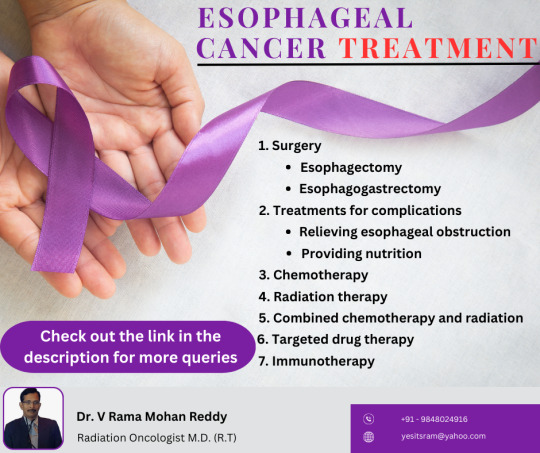
Esophageal (food pipe) Cancer: Difficulty in Swallowing
🔴 Don't ignore difficulty swallowing! 🩺💪 It could be a sign of esophageal cancer. 🚨 Early detection is crucial, so seek medical help right away. Spread awareness! 💙
For more details click on the link 👇🏻
https://bit.ly/3osreVo
#ICANWIN#YESITSRAM#FightAgainstCancer#CancerAwarenessMatters#TogetherAgainstCancer#CancerWarriorsUnite#EmpoweredByHope#RaisingCancerAwareness#IgniteTheFight#EsophagealCancerAwareness#ConquerCancerTogether#InspireHopeForSurvivors#CancerFreeFuture
45 notes
·
View notes
Text
Cancer Prevention Tips: Lifestyle Changes for Reducing Risk

Introduction:
Cancer is a complex disease influenced by a variety of factors, including genetics and environmental exposures. While not all cancers can be prevented, adopting certain lifestyle changes can significantly reduce your risk of developing cancer. In this blog, we will explore important cancer prevention tips that can empower you to make proactive choices for a healthier life.
1. Quit Smoking:
Tobacco use is one of the leading causes of preventable cancers. Quitting smoking and avoiding exposure to secondhand smoke can dramatically reduce your risk of lung, throat, mouth, and other types of cancers. Seek support from healthcare professionals, join cessation programs, and utilise nicotine replacement therapies to help you quit smoking successfully.
2. Maintain a Healthy Weight:
Excess body weight, particularly obesity, is linked to an increased risk of several cancers, including breast, colorectal, pancreatic, and kidney cancers. Adopting a healthy eating plan that includes a variety of fruits, vegetables, whole grains, and lean proteins, along with regular physical activity, can help you achieve and maintain a healthy weight.
3. Follow a Balanced Diet:
A nutritious diet rich in fruits, vegetables, and whole grains provides essential vitamins, minerals, and antioxidants that can help reduce cancer risk. Limit consumption of processed and red meats, high-sugar foods, and beverages. Instead, opt for a diet that is predominantly plant-based, including plenty of fibre, while minimising processed and sugary foods.
4. Stay Active:
Engaging in regular physical activity can lower the risk of various cancers, including breast, colorectal, and endometrial cancers. Strive for at least 150 minutes of moderate-intensity exercise or 75 minutes of vigorous-intensity exercise per week. Incorporate activities you enjoy, such as walking, swimming, cycling, or dancing, to make it a sustainable part of your lifestyle.
5. Protect Your Skin:
UV radiation from the sun and tanning beds is a significant risk factor for skin cancer. Protect your skin by seeking shade, wearing protective clothing, using sunscreen with a high SPF, and avoiding indoor tanning. Regularly examine your skin for any changes, such as new moles or growths, and consult a dermatologist if you notice anything suspicious.
6. Limit Alcohol Consumption:
Excessive alcohol consumption is associated with an increased risk of several cancers, including those of the mouth, throat, liver, and breast. If you choose to drink, do so in moderation. The recommended limits are up to one drink per day for women and up to two drinks per day for men.
Conclusion:
By incorporating these cancer prevention tips into your daily life, you can significantly reduce your risk of developing various types of cancers. Remember that small changes can make a big difference. Quitting smoking, maintaining a healthy weight, following a balanced diet, staying physically active, protecting your skin, and moderating alcohol consumption are essential steps towards reducing your cancer risk.
In addition to these lifestyle changes, it's important to stay up to date with recommended cancer screenings and seek regular medical check-ups. Early detection plays a crucial role in successful cancer management.
Empower yourself with knowledge and take charge of your health. By making informed choices and adopting a healthy lifestyle, you can actively reduce your risk of cancer and promote overall well-being. Your actions today can pave the way for a healthier and cancer-free future.
For more details click on the link 👇🏻
https://bit.ly/3osreVo
#HopeAgainstCancer#ICANWIN#YESITSRAM#FightAgainstCancer#CancerAwarenessMatters#TogetherAgainstCancer#CancerWarriorsUnite#EmpoweredByHope#RaisingCancerAwareness#IgniteTheFight#ConquerCancerTogether#InspireHopeForSurvivors#CancerFreeFuture#CancerAwareness#CancerSupport#CancerSurvivor#CancerFighter#CancerCommunity#CancerResearch#CancerPrevention#CancerFree#EndCancer#StandUpToCancer#CancerJourney#CancerWarrior#CancerAware#CancerThrive#NoOneFightsAlone
46 notes
·
View notes
Text
🔴 Early detection is crucial! ⚠️🩺 If you suspect #EwingSarcoma, don't delay seeking medical help. Timely diagnosis is key to effective treatment. Let's raise awareness and prioritize our health! 💪💙
For more details click on the link 👇🏻
https://bit.ly/3osreVo
#ICANWIN#YESITSRAM#FightAgainstCancer#CancerAwarenessMatters#TogetherAgainstCancer#CancerWarriorsUnite#EmpoweredByHope#RaisingCancerAwareness#IgniteTheFight#ConquerCancerTogether#InspireHopeForSurvivors#CancerFreeFuture
46 notes
·
View notes
Text
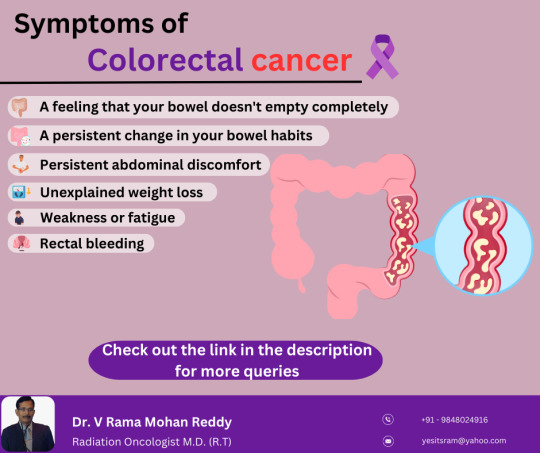
Colorectal Cancer: Blood in stool
🔴 Attention: Blood in stool could be a sign of #ColorectalCancer. ⚠️🩺 Don't ignore it! Early detection saves lives. Take action and prioritize your health today! 💙
For more details click on the link 👇🏻
https://bit.ly/3osreVo
#ICANWIN#YESITSRAM#FightAgainstCancer#CancerAwarenessMatters#TogetherAgainstCancer#CancerWarriorsUnite#EmpoweredByHope#RaisingCancerAwareness#IgniteTheFight#ConquerCancerTogether#InspireHopeForSurvivors#CancerFreeFuture
48 notes
·
View notes
Text
Cancer in Men: Common Types, Symptoms, and Treatment Considerations
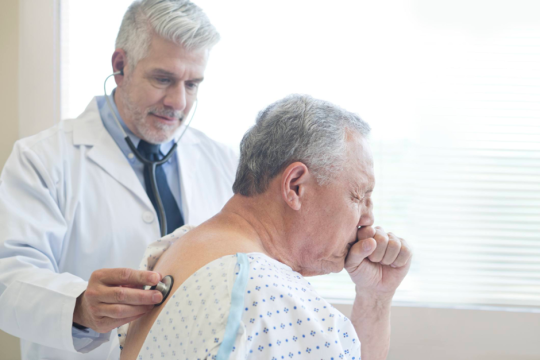
Cancer is a disease that occurs when abnormal cells grow and spread uncontrollably in the body. It can affect any organ or tissue, and it can cause various symptoms depending on the location and stage of the cancer. Cancer is among the leading causes of death in men worldwide, and some types of cancer are more common or more deadly in men than in women.
Some of the most common types of cancer in men are:
Prostate cancer: This is the most common cancer in men, affecting the prostate gland that produces semen. It usually grows slowly and may not cause any symptoms until it is advanced. Some possible signs include difficulty urinating, blood in urine or semen, erectile dysfunction, or pain in the lower back or pelvis.
Lung cancer: This is the leading cause of cancer death in men, often due to smoking or exposure to other lung irritants. It can affect one or both lungs and may cause symptoms such as coughing, chest pain, shortness of breath, wheezing, or coughing up blood.
Colorectal cancer: This is the third most common cancer in men, affecting the colon or rectum. It can cause symptoms such as changes in bowel habits, blood in stool, abdominal pain or cramps, weight loss, or fatigue.
Skin cancer: This is the most preventable type of cancer, usually caused by exposure to ultraviolet (UV) radiation from the sun or tanning beds. It can affect any part of the skin and may appear as a new or changing mole, a sore that does not heal, a red or scaly patch, or a growth that bleeds or itches.
Head and Neck cancers: This is the most common cancer in men in India. The biggest risk factor is chewing tobacco, drinking too much alcohol and HPV infections. Tobacco use is the most common cause of head and neck cancers.
Other types of cancer that are common or serious in men include bladder cancer, kidney cancer, liver cancer, pancreatic cancer, testicular cancer, and leukaemia.
The treatment options for cancer depend on the type, stage, location, and overall health of the patient. Some of the common treatments include surgery, radiation therapy, chemotherapy, immunotherapy, targeted therapy, hormone therapy, and palliative care. The goal of treatment is to remove or destroy the cancer cells and prevent them from spreading or recurring.
The best way to prevent or detect cancer early is to adopt a healthy lifestyle and get regular screenings and check-ups. Some of the preventive measures include:
Avoiding tobacco use
Limiting alcohol consumption
Eating a balanced diet rich in fruits and vegetables
Maintaining a healthy weight
Being physically active
Protecting yourself from the sun
Getting vaccinated against certain viruses that can cause cancer
Getting screened for prostate cancer, lung cancer, colorectal cancer, and skin cancer according to your age and risk factors
Cancer can be a scary and challenging diagnosis for anyone. However, with proper care and support, many men can survive and thrive after cancer. If you have any concerns or questions about cancer, talk to your doctor or a trusted healthcare professional. They can help you understand your risk factors, symptoms, diagnosis, treatment options, and coping strategies. Remember that you are not alone in this journey, and that there are many resources and support groups available to help you and your loved ones. Cancer can be a tough opponent, but you can fight back with courage and hope.
For more details click on the link 👇🏻
https://bit.ly/3osreVo
#ICANWIN#YESITSRAM#FightAgainstCancer#CancerAwarenessMatters#TogetherAgainstCancer#CancerWarriorsUnite#EmpoweredByHope#RaisingCancerAwareness#IgniteTheFight#ConquerCancerTogether#InspireHopeForSurvivors#CancerFreeFuture
48 notes
·
View notes
Text
Survivorship Care Plans: Transitioning to Life After Cancer Treatment

If you have completed your cancer treatment, you may wonder what comes next. How will you cope with the physical and emotional changes that cancer and its treatment have caused? How will you monitor your health and prevent recurrence or new cancers? How will you coordinate your care among different health care providers?
These are some of the questions that a survivorship care plan can help you answer. A survivorship care plan is a record of your cancer and treatment history, as well as any checkups or follow-up tests you need in the future. It may also list possible long-term effects of your treatments, and ideas for staying healthy.
A survivorship care plan can help you and your health care team understand each other and communicate better. It can also help you transition from active treatment to life after cancer. Here are some of the benefits of having a survivorship care plan:
It can help you keep track of your medical information, such as the type and stage of cancer you had, the treatments you received, and the names and contact information of your health care providers.
It can help you know what to expect after treatment, such as how often you need to see your oncologist or primary care provider, what tests or scans you need to have, and what signs or symptoms to watch for.
It can help you manage the physical and emotional effects of cancer and its treatment, such as fatigue, pain, anxiety, depression, sexual dysfunction, fertility issues, or cognitive changes. It can also suggest resources or referrals for support services, such as counselling, nutrition, physical therapy, or complementary therapies.
It can help you adopt healthy behaviours to reduce your risk of recurrence or new cancers, such as quitting smoking, limiting alcohol intake, eating a balanced diet, exercising regularly, and protecting yourself from the sun.
A survivorship care plan is not a one-size-fits-all document. It is personalised to your needs and preferences. You should receive a survivorship care plan from your oncologist during or after your treatment. If you did not get one, ask your oncologist about it. You should also share it with your primary care provider and any other health care providers involved in your care.
A survivorship care plan is a tool that can help you take charge of your health and well-being after cancer treatment. By following the recommendations in your plan, you can improve your quality of life and outcomes.
For more details click on the link 👇🏻
https://bit.ly/3osreVo
#ICANWIN#YESITSRAM#FightAgainstCancer#CancerAwarenessMatters#TogetherAgainstCancer#CancerWarriorsUnite#EmpoweredByHope#RaisingCancerAwareness#IgniteTheFight#ConquerCancerTogether#InspireHopeForSurvivors#CancerFreeFuture
48 notes
·
View notes
Text

Suspect Endometrial Cancer: Abnormal or Heavy Periods
🔴 Ladies, pay attention to your body! 🩺💪 Abnormal or heavy periods could be a red flag for endometrial cancer. 🚩 Don't ignore the signs! Seek medical advice promptly. Early detection is crucial for successful treatment. For more details click on the link 👇🏻
https://bit.ly/3osreVo
#ICANWIN#YESITSRAM#FightAgainstCancer#CancerAwarenessMatters#TogetherAgainstCancer#CancerWarriorsUnite#EmpoweredByHope#RaisingCancerAwareness#IgniteTheFight#ConquerCancerTogether#InspireHopeForSurvivors#CancerFreeFuture#EndometrialCancerAwareness
48 notes
·
View notes
Text
Radiation Therapy Explained: Benefits, Process, and Potential Side Effects

Radiation therapy is a type of cancer treatment that uses high doses of radiation to kill cancer cells and shrink tumours. Radiation therapy works by damaging the DNA of cancer cells, which prevents them from dividing or growing. Radiation therapy can be delivered externally or internally, depending on the type and location of the cancer.
Radiotherapy is a rapidly growing technically advancing speciality.
The most advanced radiotherapy techniques include:
ETHOS, Linear Accelerators with Artificial Intelligence.
MR Linear Accelerators, where a MR imaging machine is used as part of treatment for better imaging and treatment position and precision.
Cyberknife: A miniature linear accelerator mounted on a robotic arm, used for high precision radiotherapies to like brain tumors and recurrent tumors close to critical organs. Cyberknife is used even in noncancerous brain tumors like schwannommas and trigeminal nerve roots alleviating the pain and suffering of trigeminal neuralgia.
Proton Beam Therapy.
3D conformal radiation therapy.
Intensity-modulated radiation therapy (IMRT)
Volumetric modulated radiation therapy (VMAT)
Image-guided radiation therapy (IGRT)
Stereotactic radiosurgery (SRS)
Brachytherapy.
Superficial x-ray radiation therapy (SXRT)
Intraoperative radiation therapy (IORT)
Benefits of Radiation Therapy
For many common cancers, such as breast cancer, bowel cancer, uterine cancer, skin cancers and prostate cancer, radiation therapy is highly effective in reducing the risk of cancer recurrence if delivered either before or after surgery. In some cancers (for example (prostate, head and neck, bladder, lung, cervix and skin cancers), radiation therapy, with or without drug therapy, can be used as the main curative treatment and in this way avoids the risks of surgery and the removal of organs.
For some cancers that are too advanced to be cured, radiation therapy is very effective for pain and other problems caused by cancer, such as bleeding from the lung or bladder. For example, pain in the bones from the spread of cancer can be improved significantly or be completely removed in around 75% of patients.
New technological advances in radiation therapy have made life better for cancer patients in recent years by making treatments even quicker, more accurate and effective.
Radiation therapy can help:
● Cure cancer by destroying all the cancer cells in a tumour.
● Control cancer by slowing down its growth or preventing it from spreading to other parts of the body.
● Relieve symptoms such as pain, bleeding, or pressure caused by a tumour.
Process of Radiation Therapy
The process of radiation therapy varies depending on the type and stage of the cancer, the goals of the treatment, and the patient’s overall health and preferences. Generally, the process involves:
Radiation therapy is a type of cancer treatment that uses high energy beams to destroy cancer cells and shrink tumours.
The American Cancer Society notes that more than half of people with cancer receive radiation therapy.
Radiation damages genetic material called DNA inside of cancer cells. If the cancer cell cannot repair the DNA, the cell will not be able to produce new cells and may die.
The radiation may injure noncancerous cells, but most are able to recover.
A person’s treatment team will carefully plan radiation therapy to minimise damage to normal tissues and organs.
● A consultation with a radiation oncologist, who is a doctor who specialises in treating cancer with radiation.
● A planning session is where a radiation therapist will keep the patient immobilised in position with thermoplastic masks, then imaging tests such as CT scans or MRI scans are used to map out the exact location and size of the tumour and the surrounding normal tissues.
● A simulation session, where a radiation therapist will position the patient on a table and mark the skin with ink or tattoos to guide the delivery of the radiation beams.
● A treatment session, where the patient will lie still on a table while a machine called a linear accelerator will deliver the radiation beams to the tumour from different angles. The treatment session may last from a few minutes to an hour, depending on the dose and type of radiation therapy. The patient may need to have several treatment sessions over days, weeks, or months.
Potential Side Effects of Radiation Therapy
Radiation therapy can cause side effects that vary depending on the part of the body being treated, the dose and type of radiation therapy, and the patient’s individual response. Some common side effects include:
● Skin changes such as redness, dryness, itching, peeling, or blistering.
● Fatigue or tiredness that may interfere with daily activities.
● Nausea, vomiting, diarrhoea, or constipation that may affect appetite and digestion.
● Hair loss in the area being treated.
● Mouth sores or dry mouth that may make eating or swallowing difficult.
● Headaches or memory problems that may affect concentration or mood.
● Inflammation or infection of the bladder or rectum that may cause pain or bleeding during urination or bowel movements.
Most side effects are temporary and will go away after the treatment is completed. However, some side effects may be long-lasting or permanent, such as infertility, nerve damage, lymphedema (swelling caused by fluid build-up), or secondary cancers.
Radiation therapy is an effective and safe way to treat many types of cancer. However, it is not suitable for everyone and it may have some risks and limitations. Therefore, it is important to discuss with your doctor about the benefits and drawbacks of radiation therapy for your specific situation before starting the treatment.
For more details click on the link 👇🏻
https://bit.ly/3osreVo
#ICANWIN#YESITSRAM#FightAgainstCancer#CancerAwarenessMatters#TogetherAgainstCancer#CancerWarriorsUnite#EmpoweredByHope#RaisingCancerAwareness#IgniteTheFight#ConquerCancerTogether#InspireHopeForSurvivors#CancerFreeFuture
49 notes
·
View notes
Text
Surgical Options in Cancer Treatment: Procedures and Recovery
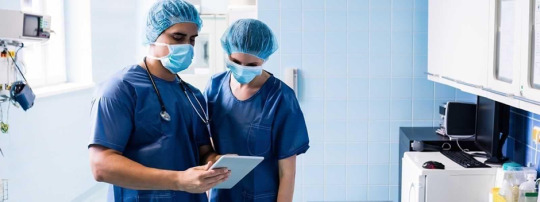
Cancer surgery is a common and effective way to treat many types of cancer and the specialist who does these surgeries is a Surgical Oncologist.
Surgery involves removal of tumor and some surrounding healthy tissue to prevent the cancer from spreading or coming back. Surgery can also help diagnose, stage the type of cancer and will help in suggesting further treatment if needed based on staging of cancer (tumor, node, metastasis) and relieving symptoms of cancer.
Biopsy of the surgical specimen will be sent to Pathology and Depending on the report Oncologist may suggest further treatment.
Surgery will determine the following:
If you have cancer
Where the cancer is located
If it has spread or is affecting other organs in the body
Surgery can be performed in a doctor's office, clinic, surgery centre, or hospital. Where you go depends on the type of surgery and how much time you need to heal. Your surgery may require medication to block the awareness of pain, called anaesthesia. There are different types of anaesthesia depending on the type and extent of the surgery.
Types of Surgery
There are different types of surgery for cancer treatment, depending on the type, location, and stage of the cancer, as well as the patient’s preferences and overall health. Some of the most common types of surgery are:
Open surgery: This is the traditional type of surgery that uses a scalpel to make a large incision in the skin and access the tumour. Open surgery can remove large or deep tumours, but it may also cause more pain, scarring, and longer recovery time.
Minimally invasive surgery: This is a type of surgery that uses small instruments and tiny incisions to remove the tumour. Minimally invasive surgery can include laparoscopic surgery (using a thin tube with a light and camera) or robotic surgery (using a computer-controlled device). Minimally invasive surgery can reduce pain, bleeding, infection, and recovery time, but it may not be suitable for all types of tumours.
Specialised surgery: This is a type of surgery that uses special techniques or devices to destroy or remove cancer cells. Specialised surgery can include cryosurgery (using extreme cold), electrosurgery (using electric current), laser surgery (using light beams), or Mohs surgery (removing thin layers of skin cancer). Specialised surgery can be more precise, less invasive, or more effective for certain types of cancers.
Recovery from Surgery
The recovery from surgery depends on many factors, such as the type and extent of the surgery, the patient’s age and health status, and the possible complications or side effects. Some common aspects of recovery are:
Pain management: The patient may experience pain or discomfort after the surgery, which can be relieved by medication, ice packs, relaxation techniques, or other methods.
Wound care: The patient may need to keep the surgical site clean and dry, change dressings, apply ointment, or avoid certain activities to prevent infection or bleeding.
Physical therapy: The patient may need to do exercises or stretches to improve mobility, strength, or range of motion after the surgery. Physical therapy can also help prevent blood clots, swelling, or lymphedema (fluid buildup).
Follow-up care: The patient may need to have regular check-ups with the surgeon or oncologist to monitor the healing process, remove stitches or drains, test for signs of cancer recurrence, or adjust the treatment plan.
Surgery is an important option for many people with cancer. It can help cure, control, or improve the quality of life for patients with different types of cancers. However, surgery also has some risks and limitations that need to be discussed with the doctor before making a decision.
For more details click on the link 👇🏻
https://bit.ly/3osreVo
#ICANWIN#YESITSRAM#FightAgainstCancer#CancerAwarenessMatters#TogetherAgainstCancer#CancerWarriorsUnite#EmpoweredByHope#RaisingCancerAwareness#IgniteTheFight#ConquerCancerTogether#InspireHopeForSurvivors#CancerFreeFuture
49 notes
·
View notes
Text

Cancer survivors, prioritize your after-treatment care! 🎗️ Adopt a healthy lifestyle, seek emotional support, and manage side effects.🌱💪
For more details click on the link 👇🏻
https://bit.ly/3osreVo
#ICANWIN#YESITSRAM#FightAgainstCancer#CancerAwarenessMatters#TogetherAgainstCancer#CancerWarriorsUnite#EmpoweredByHope#RaisingCancerAwareness#IgniteTheFight#ConquerCancerTogether#InspireHopeForSurvivors#CancerFreeFuture#CancerSurvivors
48 notes
·
View notes
Text
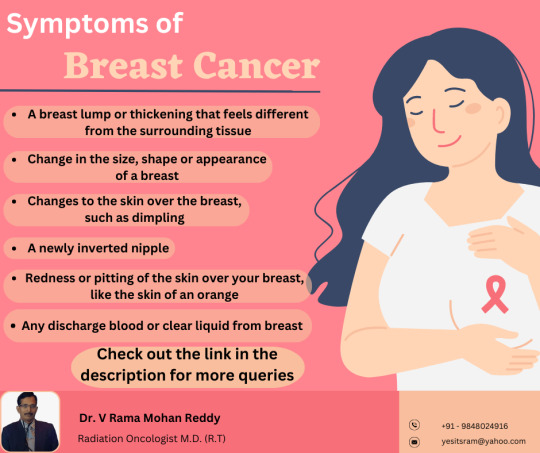
Symptoms To Look for To Prevent or Detect Breast Cancer
Stay alert! 🚨 Keep an eye out for these breast cancer symptoms.
Early detection saves lives!
For more details click on the link 👇🏻
https://bit.ly/3osreVo
#BreastCancerAwareness 🎗️💖#ICANWIN#YESITSRAM#fightagainstcancer#CancerAwarenessMatters#TogetherAgainstCancer#CancerWarriorsUnite#EmpoweredByHope#RaisingCancerAwareness#ignitethefight#ConquerCancerTogether#InspireHopeForSurvivors#CancerFreeFuture
46 notes
·
View notes